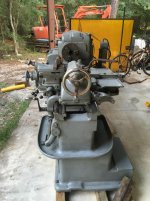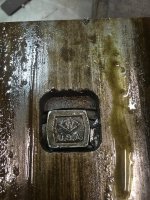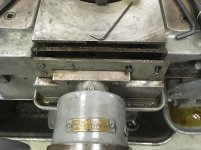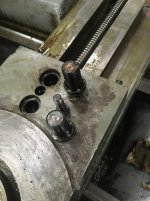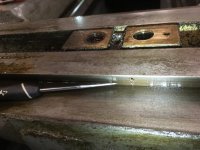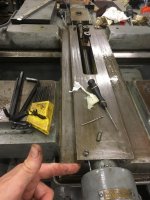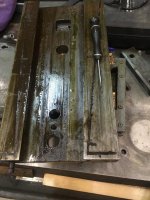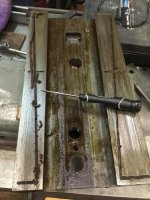Pictures below of the 1952 14x30 Pacemaker that I recently acquired from an auction in Tennessee.
Lifting with straps was a piece of cake, even though I should have placed the wooden blocks at the ways rather than at the bottom of the bed.
It has the high range, 18-speed spindle with a D1-6 nose, and includes the taper attachment and the carriage stop. It seems to be in fine condition, though the carriage oil passages(or reservoir, perhaps) need to be cleaned out. I'm grateful for Panza's thread (and others) that covers removing the cross slide.
There are numerous minor dings on the inner ways for the tailstock. The hard outer ways, however, have a mirror finish on them, though I can feel a slight step at the base of the vee near the headstock. They seem to have worn evenly while shrugging off all impacts and scrapes.
I really like the clutched spindle as compared to the direct drive that my Okuma has. The Okuma is a very nice machine, but every time the spindle starts, the lights in my house dim. Actuating the Pacemaker clutch doesn't cause a noticeable voltage drop.
Lifting with straps was a piece of cake, even though I should have placed the wooden blocks at the ways rather than at the bottom of the bed.
It has the high range, 18-speed spindle with a D1-6 nose, and includes the taper attachment and the carriage stop. It seems to be in fine condition, though the carriage oil passages(or reservoir, perhaps) need to be cleaned out. I'm grateful for Panza's thread (and others) that covers removing the cross slide.
There are numerous minor dings on the inner ways for the tailstock. The hard outer ways, however, have a mirror finish on them, though I can feel a slight step at the base of the vee near the headstock. They seem to have worn evenly while shrugging off all impacts and scrapes.
I really like the clutched spindle as compared to the direct drive that my Okuma has. The Okuma is a very nice machine, but every time the spindle starts, the lights in my house dim. Actuating the Pacemaker clutch doesn't cause a noticeable voltage drop.
Attachments
Last edited:




